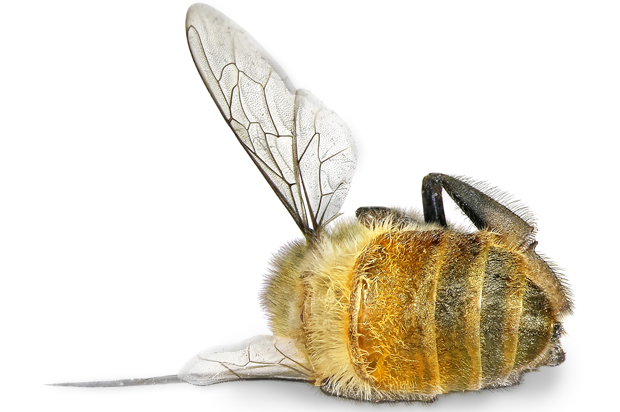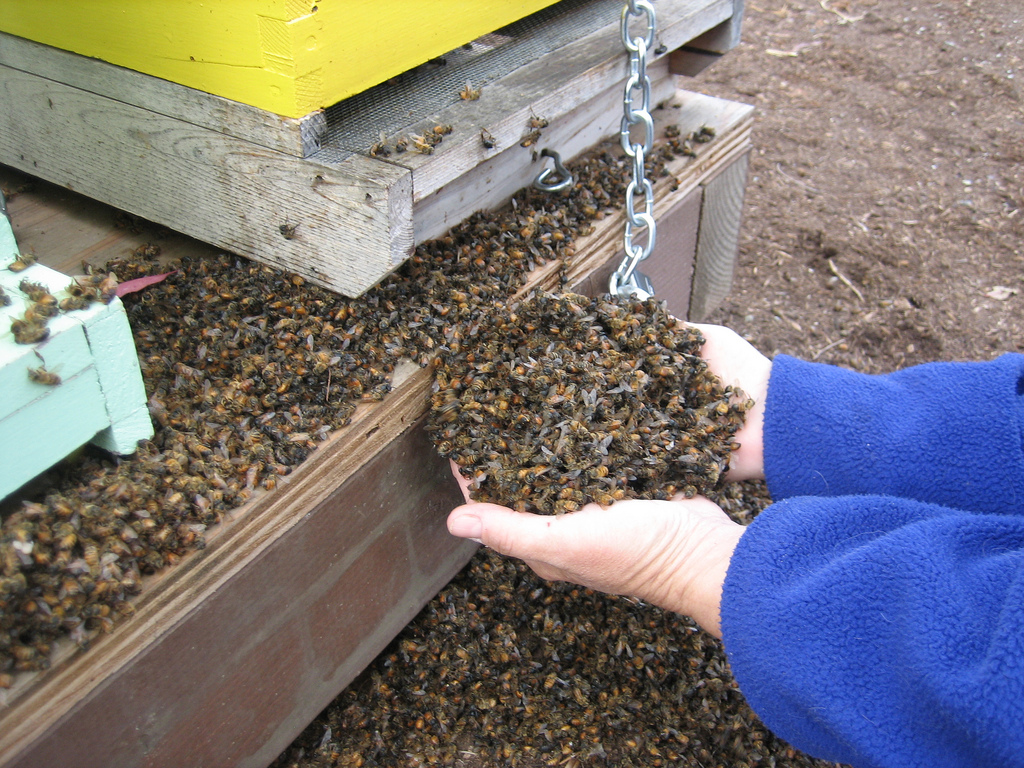A microscopic pathogen and pesticides found in honeycombs are two major contributors to the bee disease known as colony collapse disorder, which has wiped out billions of bees throughout the world over the past three years, new research at Washington State University has confirmed.
“One of the first things we looked at was the pesticide levels in the wax of older honeycombs,” Sheppard said. Using combs contributed by the USDA, Sheppard found ” high levels of pesticide residue.”
Bees raised in those hives “had significantly reduced longevity,” he said.
What Is This Pesticide?
In 2008 the German Organization Coalition accuses Bayer CropScience (who works with Monsanto) of “marketing dangerous pesticides and thereby accepting the mass death of bees all over the world.”
The coalition filed the charge in cooperation with German beekeepers who claim they lost thousands of hives after poisoning by the Bayer pesticide clothianidin and imidacloprid.
Since 1991, Bayer has been producing the insecticide imidacloprid, which is one of the best selling insecticides in the world, often used as seed-dressing for corn, sunflower, and rape (bees love this plant). Bayer exports imidacloprid to more than 120 countries and the substance is Bayer’s best-selling pesticide.
The coalition alleges that the start of sales of imidacloprid and clothianidin coincided with the occurrence of large scale bee deaths in many European and American countries.
Up to 70 percent of all hives have been affected. In just France alone, approximately 90 billion bees died over the past 10 years, reducing honey production by up to 60 percent.
“Bayer’s Board of Management has to be called to account since the risks of neonicotinoids such as imidacloprid and clothianidin have now been known for more than 10 years,” says Philipp Mimkes, spokesman for the Coalition Against Bayer-Dangers.
The coalition is demanding that Bayer withdraw all neonicotinoids from the market worldwide.
“With an annual turnover of nearly 1 billion dollars, neonicotinoids are among Bayer’s most important products,” said Mimkes. “This is the reason why Bayer, despite serious environmental damage, is fighting against any application prohibitions.”
Bayer CropScience’s Response
Bayer says the pesticide entered the environment because farmers failed to apply an adhesive agent that affixes the compound to the seed coats. Without the fixative agent, Bayer says, the compound drifted into the environment from sown rapeseed and sweet corn and then affected the honeybees.
“Seed treatments are one of the most targeted and environmentally friendly forms to apply crop protection products. We regret the recent bee losses and the situation they have created for the beekeepers in Baden-Württemberg,” said Dr. Hans-Josef Diehl, head of development and registration at Bayer CropScience
Dr. Richard Schmuck, an ecologist at Bayer CropScience, said “When used correctly,” he said, “this crop protection product is safe for operators, consumers and the environment and fulfills the international criteria with regard to ecological systems.”
US Government Not Releasing Research
In the United States, the nonprofit Natural Resources Defense Council filed a lawsuit in federal court in Washington, DC to force the federal government to disclose studies it ordered on the effect of clothianidin on honey bees.
Studies on clothianidin were ordered by the U.S. Environmental Protection Agency from Bayer CropScience in 2003 when the EPA granted the company a registration for the chemical. You have to think, if the studies revealed it was not responsible, then the USDA would have released that information. There silence can only indicate the results they found were shocking.
NRDC attorneys believe that the EPA has evidence of connections between pesticides and the mysterious honey bee die-offs reported across the country called colony collapse disorder that it has not made public.
Colony collapse disorder has claimed more than one-third of honey bees in the United States since it was first identified in 2006.








